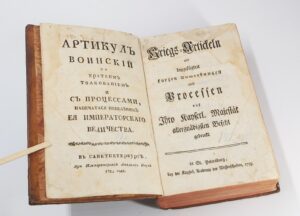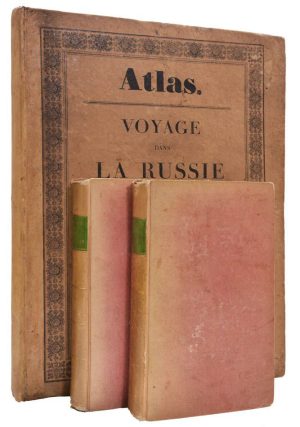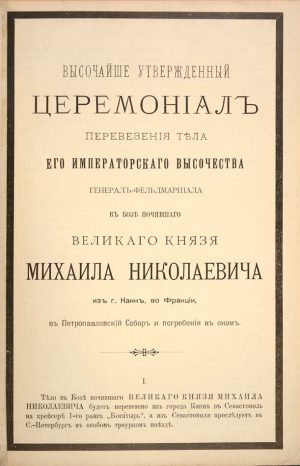Our Notes & References
Peter the Great’s military instructions, issued during the reign of his daughter, Elizabeth: first separate edition of the augmented ‘Military Articles’ and the first corrected separate edition of the ‘Exercises’.
Elizabeth of Russia (1709-61) ascended the throne in 1741 on the wave of mass dissatisfaction with the dominance of foreigners in court and the general instability of the crown in an era of palace coups. Upon the ascension, she immediately declared her loyalty to her father Peter the Great’s precepts and the continuity of his vision of the government and country’s development: her military legislation followed his initiatives and one of her first decrees was in fact “On the ordering of training in regiments, as it was during the lifetime of Emperor Peter the Great”.
Russia’s first military criminal code, ‘Artikul voinskii’ was first printed in December 1714 as part of the ‘Instruktsii i artikuly voennye’ [Military Instructions and Articles]; in 1715 it was slightly modified and published as a separate edition, and later the same year, in a bilingual Russian and German edition as ‘Artikul voinskii s kratkim tolkovaniem tsarskogo velichestva’ [Military Article with a Brief Interpretation of the Tsar’s Majesty]. In 1719, it was included in an updated version of Peter’s Military Statute (first published in 1716) in an edition entitled ‘Kniga ustav voinskii…’ [Book of the Military Statute…]. The second bilingual edition of ‘Artikul voinskii’ was published by order of tsarina Anna Ioannovna in 1735, and since Elizabeth’s reign, it was regularly reissued with small changes (either just in Russian, or with the German text, as here) for more than a century; “the reappearance of the German text demonstrates the continued employment of German soldiers in the Russian army during this period” (Cracraft).
Unlike earlier separate editions, the present edition from 1755 includes practical descriptions of military trials and is presented as a first edition of its kind (earlier and later editions of ‘Artikul’ were published with mention of the second, third… and tenth editions). The text is laid in Russian and German on facing pages, with elegant initials and woodcut head- and tailpieces. There are two variants of this 1755 edition with a slight difference in the layout of titles, pagination and number of quires, as noted in the RNB (Russian National Library) catalogue; both are considered equal.
Following his military reforms, Peter required a corpus of detailed instructions for the army; he took active part in the compilation of his Artikul voinskii and based it on Swedish and other European military regulations. It opens with Peter’s decree announcing the text of the oath which emphasised the importance of observing firm military discipline, and further outlines general duties of military personnel, structure of military courts and the procedure for hearing cases in them, provisions concerning discipline and internal service, and types of military offences and punishments in 209 articles.
The ‘Artikul’ increased the severity of punishments in comparison to the previous Russian regulations. It considered any crime primarily as a violation of subordination, so for instance, treason and attempted suicide were equal in the eyes of the legislator and were both subject to capital punishment. Death sentence was required unconditionally for 74 types of crime, and in 27 cases as an alternative along with other punishments. The death penalty by burning was required for crimes against faith, counterfeiting and arson; by quartering for political crimes, such as insulting the tsar; and charioting for murder or robbery. The rules outlined by the Artikul were applied not only by military, but also by civil courts for criminal offences; it was used together with the ‘Sobornoe Ulozhenie’ of 1649 until the publication of the Code of Laws by Nicholas I in 1832.
As often, the volume is bound with ‘Ekzertsitsii…’ [Exercises…], or tactical and formation activities to train troops, divided into three parts discussing different types of military training, preparations for marching for each rank, instructing on how to salute different ranks, how to change sentries, who should replace killed officers and how to maintain good behaviour and proper manners among other specific aspects of military life. The last part presents descriptions of each military rank, from a soldier to a colonel, with substantial descriptions of their positions and responsibilities.
‘Ekzertsitsii‘ were first printed as a part of the ‘Military Statute’ in 1719, and as a separate edition only in 1756. SK shows two bilingual editions under the same titles and in the same format, both published by the Imperial Academy of Sciences in 1756, but one with a flawed pagination and a slightly different title; the RGB (Russian State Library) catalogue notes that one of these two editions had a printrun of 975 copies, and the other 550. The present copy has a regular pagination and was perhaps published right after the flawed edition. The same corrected bilingual editions were published again in 1787 and 1796. Another book in Russian, marked as the second edition, was also published in 1756 under the title ‘Kniga o ekzertsitsii…’ [Book about Exercises…], also with a flawed pagination.
Rare: OCLC locates only two physical copies of the 1755 edition of Articles (including one bound with Exercises from 1756), both at UCL – apparently none in the USA. We could not trace any earlier edition at auction in the West in recent decades; only some years ago two other copies of ours (with both works bound together too, as here), and one copy of a 1780 edition.
Provenance
A.T. (gilt initials to spine); with Christie’s London, 29 Nov. 2007, lot 37; Pr. Philip Longworth (1933-2020, historian, writer and book collector, esp. on Russian history).
Bibliography
Bitovt 1182 and 1222; Svod. Kat. 320 and 8573; J. Cracraft, The Petrine revolution in Russian culture, Harvard, 2004, p.114.
Abdulhannianov I.A. “Retrospektivnoe issledovanie ugolovno-pravovoi fiktsii v normakh artikula voinskogo 1715 g.” // Vestnik RUK. 2022. №2 (48).
Serov, Dmitrii. “Zabytye redaktsii Artikula voinskogo i «Kratkogo izobrazheniia protsessov ili sudebnykh tiazheb» (iz istorii kodifikatsii voennogo zakonodatelstva Rossii XVIII v.)” // Lex Russica. 2013. № 2 (Vol. LXXV).
Physical Description
Two works in one vol. 8vo (19.5 x 12.5 cm). Title page in Russian, one in German, and 391 pp.; title in Russian, one in German, and 175 pp.
Binding
Contemporary mottled calf, red morocco label on spine, spine with gilt floral tooling in compartments and gilt lettering, red edges, marbled orange paste-paper endpapers.
Condition
Light creases along spine and hinges, upper spine restored with a light-brown patch, a bit rubbed at extremities; occasional mostly marginal light staining and browning, minor tears and marks to title pages. A pleasant, fresh example in attractive contemporary binding.



































![Image for IAKINF [BICHURIN]. Zapiski o Mongolii. Skt. Peterburg, 1828. #2](https://www.pyrarebooks.com/wp-content/uploads/2023/03/607_1-300x240.jpg)

